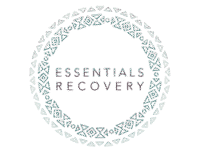The landscape of addiction treatment has changed dramatically in recent years, and one of the most significant shifts is the growing role of telehealth services. Once considered a secondary option, telehealth has become a frontline tool for delivering accessible, consistent, and confidential support for individuals facing substance use disorders (SUDs). Whether due to geographic barriers, social stigma, or the need for flexibility, many people are now turning to virtual care as a lifeline in their recovery journey. In this article, we’ll explore how telehealth is transforming substance abuse treatment, who it benefits, what services are available, and how to make the most of this modern approach to recovery.
What Is Telehealth in Addiction Treatment?
Telehealth refers to the use of digital technology—typically video calls, phone calls, apps, or online platforms—to deliver healthcare services remotely. In the context of substance abuse treatment, telehealth allows people to access counseling, therapy, support groups, medication-assisted treatment (MAT), and other recovery resources from home or anywhere they feel safe. Telehealth has evolved from a niche offering to a mainstream option. Today, it plays a vital role in both early intervention and long-term recovery support. It’s not just about convenience—it’s about accessibility, privacy, and choice.
Why Telehealth Matters in Recovery
For many individuals struggling with addiction, accessing traditional treatment is a challenge. Barriers like transportation, cost, scheduling conflicts, and fear of stigma can prevent people from seeking help. Telehealth helps overcome many of these obstacles.
Here’s why telehealth support is crucial:
- Removes geographic limitations – People in rural or underserved areas can connect with specialists they’d never reach in person.
- Reduces stigma – Patients can attend sessions from private settings, without fear of being seen at a clinic or facility.
- Increases scheduling flexibility – Sessions can fit around work, school, or childcare responsibilities.
- Improves continuity of care – Ongoing access to providers helps maintain momentum in recovery.
- Provides rapid intervention – In a moment of crisis, immediate virtual support can prevent relapse or escalation.
Telehealth doesn’t replace all forms of in-person care—but it expands the options, making help available to more people, more of the time.
Services Commonly Offered Through Telehealth
Telehealth for substance abuse isn’t limited to one type of support. A wide range of services can now be accessed virtually, including:
1. Individual Counseling and Therapy
Licensed addiction counselors and therapists can provide one-on-one support through secure video sessions. These can focus on topics like:
- Coping with cravings
- Managing triggers
- Addressing trauma or co-occurring mental health issues
- Building relapse prevention skills
- Navigating relationships in recovery
2. Group Therapy and Support Groups
Virtual group sessions offer the peer connection and shared understanding that’s critical for recovery. Groups may be facilitated by clinicians or peer-led, and they often follow evidence-based models like: - Cognitive Behavioral Therapy (CBT)
- Dialectical Behavior Therapy (DBT)
- 12-Step facilitation
- SMART Recovery
Online group settings are also ideal for people who may be anxious about attending in-person meetings.
3. Medication-Assisted Treatment (MAT)
Telehealth has significantly expanded access to MAT services, including: - Initial evaluations for medications like buprenorphine (Suboxone)
- Prescription management and refills
- Ongoing monitoring by a physician or nurse practitioner
This model allows people to begin or maintain MAT without frequent travel to a clinic, improving treatment adherence and outcomes.
4. Recovery Coaching
Certified peer recovery coaches are now widely available through telehealth platforms. Coaches provide practical support, accountability, encouragement, and guidance through real-life challenges, often drawing from their own lived experience in recovery.
5. Mental Health Treatment
Because addiction often coexists with issues like anxiety, depression, PTSD, or bipolar disorder, integrated telehealth treatment is essential. Many platforms now offer access to dual-diagnosis professionals who can treat mental health and addiction simultaneously.
6. Family Counseling and Education
Addiction affects the whole family—and families also benefit from support. Telehealth makes it easier for family members to participate in therapy, attend educational sessions, and learn how to support a loved one in recovery.
Who Can Benefit From Telehealth Services?
Telehealth is not a one-size-fits-all solution, but it offers real value to a wide range of people, especially those who:
- Live in rural or remote areas without access to in-person care
- Have physical disabilities or health conditions that limit travel
- Are balancing recovery with work, school, or family life
- Prefer a more private or discreet approach to treatment
- Need continuity of care after inpatient or intensive outpatient programs
- Experience anxiety or sensory issues in group settings
- Are looking for affordable or insurance-covered options
For many, telehealth is the first step toward help. For others, it’s a long-term solution that fits their lifestyle and goals.
The Rise of Hybrid Treatment Models
While some individuals use telehealth as their primary mode of care, many programs now offer hybrid models that combine virtual and in-person treatment.
A hybrid approach may include:
- In-person detox or medical stabilization
- Virtual outpatient or aftercare programs
- Periodic in-office visits for assessments or drug testing
- Remote group therapy with occasional community meetups
Hybrid treatment offers the best of both worlds—the structure and connection of face-to-face interaction, with the flexibility and convenience of online support.
How to Get Started With Telehealth for Addiction
Starting telehealth treatment for substance abuse is easier than ever. Here’s how to take the first step:
1. Find a Provider
Look for licensed professionals or treatment centers that offer virtual services. Many national and local programs now offer telehealth-based:
- Outpatient care
- Individual therapy
- Medication-assisted treatment
Check with your insurance provider or use directories like Psychology Today, SAMHSA’s treatment locator, or your local recovery coalition.
2. Verify Credentials
Ensure that your provider is: - Licensed in your state
- Certified in addiction treatment or counseling
- Using secure, HIPAA-compliant technology
Avoid platforms that offer generic wellness coaching without clinical oversight if you need treatment for moderate to severe substance use disorders.
3. Schedule an Intake
Most programs begin with an intake session or evaluation to determine your needs. This may include: - Substance use history
- Mental health screening
- Treatment goals and preferences
After intake, you’ll be matched with the appropriate level of care and type of provider.
4. Set Up a Safe Space
Create a quiet, private space for your sessions. Use headphones, and consider setting “do not disturb” time on your devices to stay focused and fully engaged.
Common Concerns About Telehealth—And the Truth
Like any new approach, telehealth raises questions. Let’s address some of the most common concerns:
“Is telehealth as effective as in-person treatment?”
Yes. Numerous studies show that virtual therapy and tele-MAT can be equally effective, especially when clients are engaged and providers are properly trained.
“Will I feel connected through a screen?”
Surprisingly, yes. Many people find they open up more quickly in virtual sessions, especially when speaking from a comfortable, familiar environment.
“What about privacy?”
Telehealth platforms are required to use secure, encrypted technology that complies with HIPAA standards. Sessions are confidential and protected, just like in-person visits.
“What if I don’t have strong internet?”
Many platforms now offer audio-only sessions for those with poor bandwidth or limited access to video tools.
Tips for Making Telehealth Work for You
To get the most out of your telehealth experience:
- Treat virtual sessions like in-person appointments—be on time and present
- Avoid multitasking during sessions
- Be honest about what’s working and what isn’t
- Use tools like calendars or apps to track meetings and progress
- Build a support system outside of therapy to complement your treatment
Telehealth works best when it’s integrated into a broader recovery lifestyle.
Final Thoughts
Telehealth is more than just a modern convenience—it’s a powerful, proven way to make recovery accessible to more people, in more places, at more stages of their journey. Whether you’re just starting out or continuing a years-long process of healing, virtual care offers flexibility, privacy, and real support tailored to your needs.
You don’t have to wait for the perfect time, place, or circumstances to get help. With telehealth, recovery is just a screen away—and that might be all the opening you need to change your life. Call us today at 855-509-1697.



